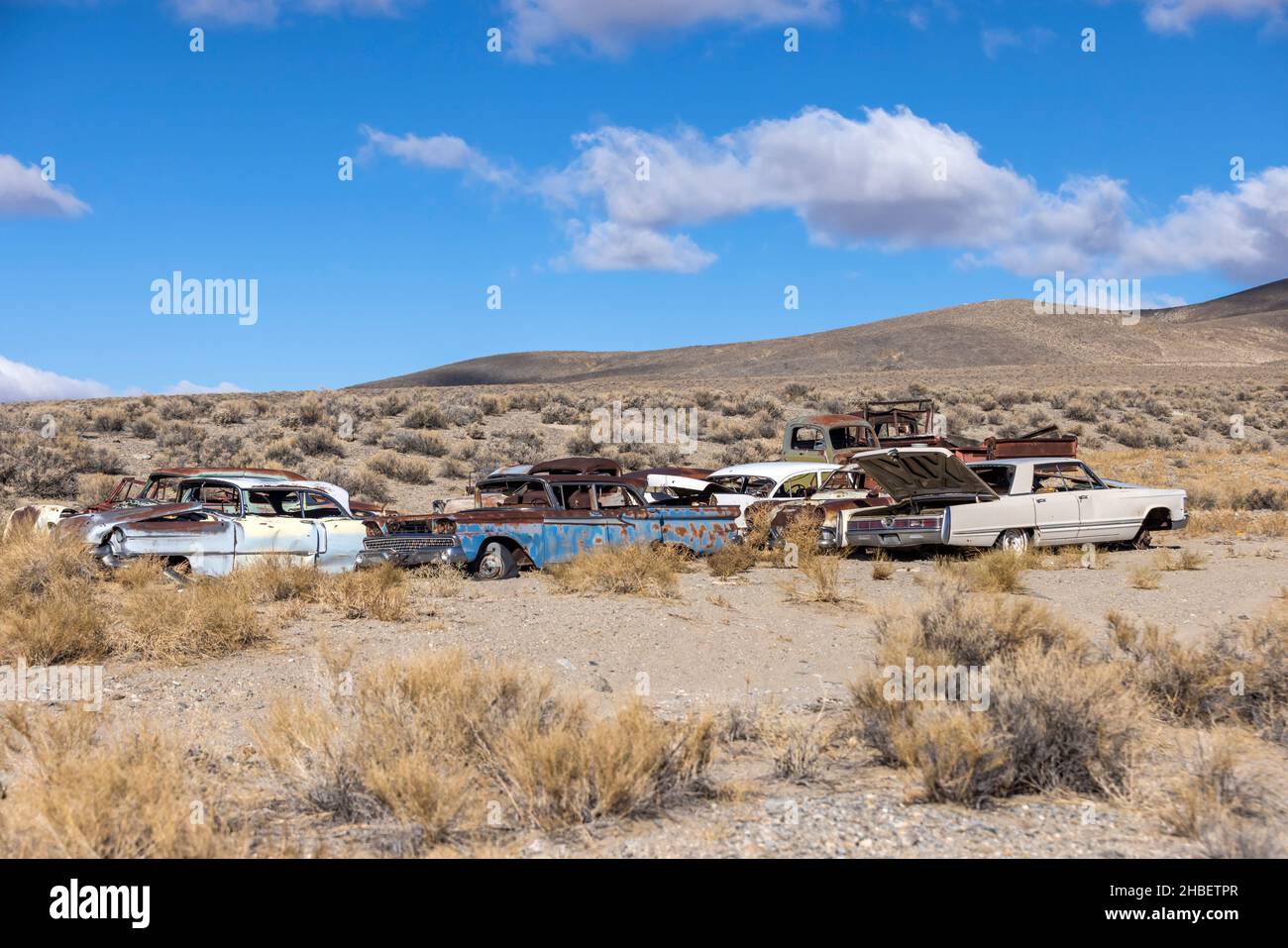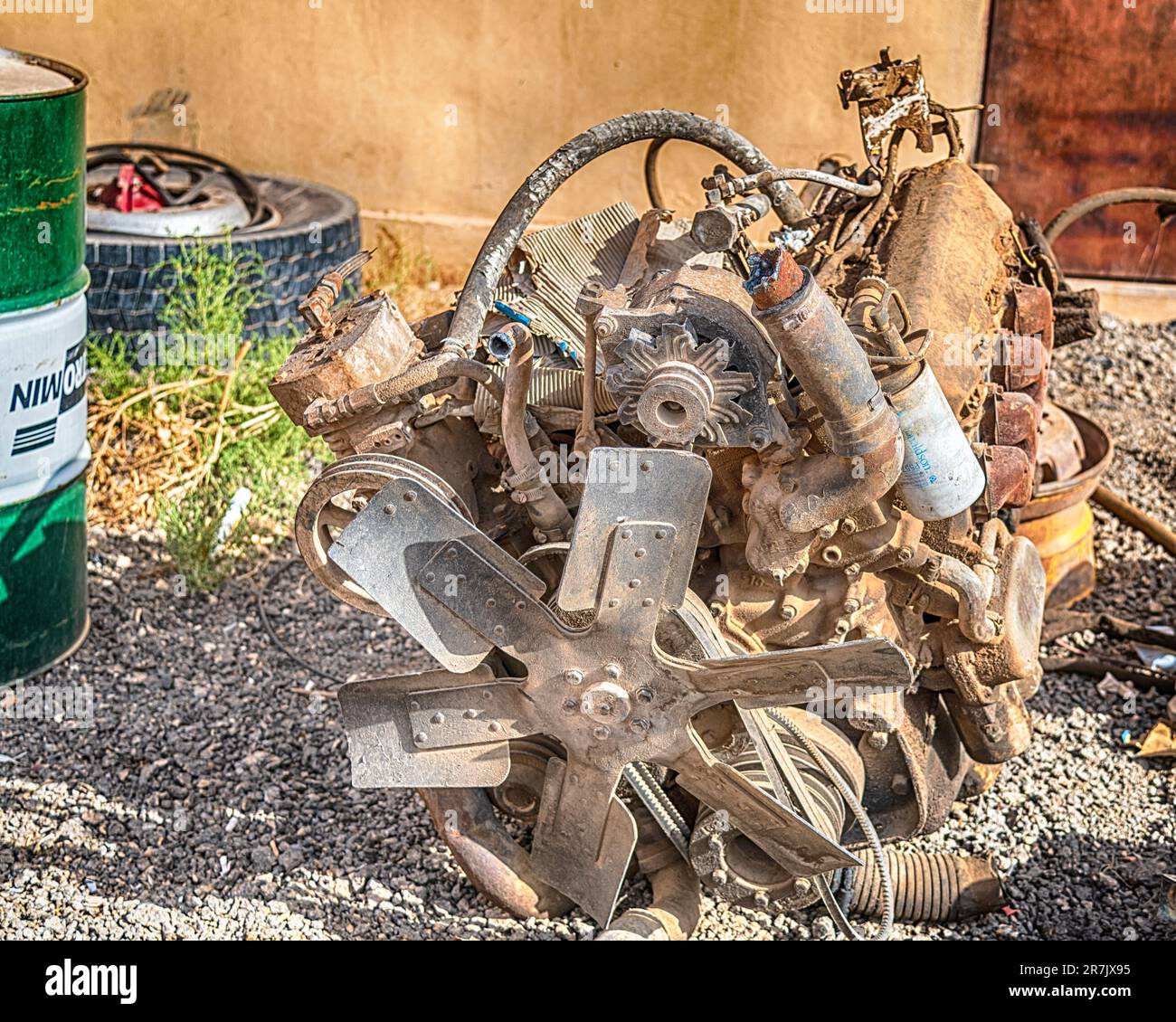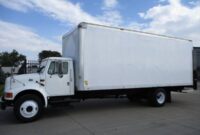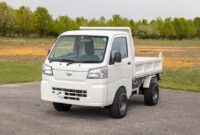Junkyard Trucks For Sale: Unearthing Hidden Gems and Project Vehicles pickup.truckstrend.com
The phrase "Junkyard Trucks For Sale" often conjures images of rusty, broken-down hulks, fit only for scrap metal. However, for a growing community of mechanics, restorers, DIY enthusiasts, and budget-conscious buyers, these seemingly discarded vehicles represent a treasure trove of opportunity. Whether you’re hunting for a cheap parts donor, a challenging restoration project, or a robust work truck that won’t break the bank, understanding the world of junkyard trucks can unlock significant value. This comprehensive guide will delve into every facet of Junkyard Trucks For Sale, providing practical advice, dispelling myths, and equipping you with the knowledge to make an informed purchase.
The Allure of Junkyard Trucks: Why Buy Salvage?
Junkyard Trucks For Sale: Unearthing Hidden Gems and Project Vehicles
The primary driver behind the interest in Junkyard Trucks For Sale is undeniable: cost. A truck that has been deemed a total loss by an insurance company, or simply abandoned, can be acquired for a fraction of its retail value. But the appeal extends far beyond mere affordability:
- Cost Savings: This is the most obvious benefit. A truck with a salvage title or significant damage can be purchased for mere hundreds or a few thousand dollars, a stark contrast to the tens of thousands for a new or even used, clear-title vehicle. These savings can then be allocated to repairs, upgrades, or other project costs.
- Parts Donor Potential: For those who own a specific model of truck, a junkyard counterpart can be an invaluable source of affordable, original equipment manufacturer (OEM) parts. Engines, transmissions, body panels, interior components, and even smaller, hard-to-find electrical parts can be salvaged, saving considerable money compared to buying new or aftermarket.
- Project Vehicles & Custom Builds: Many enthusiasts seek out Junkyard Trucks For Sale as the perfect foundation for a custom build, off-road rig, or classic restoration. With the initial purchase price being low, there’s more budget available for performance modifications, aesthetic upgrades, or painstaking period-correct restorations. The "blank slate" aspect allows for ultimate personalization.
- Sustainability & Recycling: Buying a junkyard truck is an act of recycling. Instead of contributing to the demand for new vehicle production and the energy consumption that entails, you’re giving an existing vehicle a second life, reducing waste and promoting resource efficiency.
- Niche & Vintage Finds: Junkyards are often the last resting places for older, rarer truck models that are no longer in production. For collectors or those seeking specific vintage aesthetics, a junkyard might hold that elusive classic pickup or unique utility vehicle.

Understanding the "Junkyard" Landscape: Types of Salvage Yards
When discussing Junkyard Trucks For Sale, it’s important to differentiate between various types of facilities that offer them:
- Traditional Junkyards / Auto Recyclers: These are often the most common type. They acquire vehicles from insurance auctions, tow yards, or private sellers. Some are "full-service," meaning their staff will pull the parts you need, while others are "U-Pull-It" yards where customers enter the yard and retrieve parts themselves. When buying a whole truck, you’ll typically be dealing with the yard’s sales office. These yards focus primarily on parts but often have whole vehicles available, sometimes even those that are relatively intact.
- Salvage Auctions: These are highly specialized auctions where insurance companies sell vehicles deemed total losses. These vehicles often come with salvage titles and can range from minor cosmetic damage to severe collision or flood damage. Many reputable salvage yards and independent dealers source their Junkyard Trucks For Sale from these auctions. Buyers can sometimes participate directly, but often need a dealer’s license.
- Online Platforms & Dealers: A growing number of online platforms and specialized dealers act as intermediaries, selling Junkyard Trucks For Sale sourced from auctions or direct purchases. These platforms often provide detailed photos, vehicle histories, and sometimes even inspection reports. They can offer a wider selection but may come with additional fees and transport costs.

Each type of venue has its pros and cons, from the hands-on savings of a U-Pull-It yard to the broader selection of an online auction. Understanding these differences will help you target your search more effectively.
What to Look For: Assessing a Junkyard Truck
Acquiring Junkyard Trucks For Sale is not like buying from a dealership. These vehicles are sold "as-is," with no warranties, and often with significant damage or missing components. Thorough inspection is paramount.

-
Understand the Title Status: This is the single most critical factor.
- Salvage The vehicle was deemed a total loss by an insurance company. It can often be rebuilt and registered, but requires a rigorous inspection process (rebuilt title inspection) in most states.
- Junk Title / Parts Only: The vehicle is legally designated for parts only and cannot be registered for road use, even if repaired. This is ideal for parts donors or off-road-only vehicles.
- Clear Title (Rare): Occasionally, a yard might have a vehicle with a clear title that was simply abandoned or sold for very little. These are rare finds.
- Lien Check: Always perform a lien check (e.g., through a VIN lookup service or state DMV) to ensure there are no outstanding financial claims on the vehicle.
-
Exterior Inspection:
- Frame Damage: This is a deal-breaker for most projects intended for road use. Look for kinks, bends, crumples, or repairs that look shoddy. A magnetic angle finder can sometimes help detect previous repairs or Bondo.
- Rust: Surface rust is common and manageable. Deep, penetrating rust on the frame, suspension mounting points, or critical body areas (rockers, cab corners) can be a costly structural issue.
- Body Panels: Assess the extent of damage. Dents, scratches, and missing panels are expected. Look for signs of major collision impact, especially around crumple zones.
- Tires & Wheels: Note their condition. They might be flat, damaged, or mismatched.
-
Interior Inspection:
- Water Damage/Mold: Look for water lines, musty odors, rust inside the cabin, or damp carpets. Flood-damaged vehicles can have pervasive electrical and rust issues.
- Missing Components: Expect some parts to be missing (radio, seats, trim pieces). Factor these into your budget.
- Wiring: Check for cut wires, exposed insulation, or signs of rodent damage.
-
Engine Bay & Underbody Inspection:
- Fluid Leaks: Look for puddles or stains under the truck, or residue on engine components (oil, coolant, brake fluid).
- Corrosion: Check battery terminals, wiring harnesses, and electrical connections for heavy corrosion, especially if flood damage is suspected.
- Belts & Hoses: Check for cracks, fraying, or extreme wear.
- Suspension & Drivetrain: Visually inspect shocks, springs, control arms, axles, and the driveshaft for damage or excessive wear.
- Exhaust System: Look for significant rust or damage.
-
Tools and Assistance:
- Bring a flashlight, a magnet (to detect Bondo), a screwdriver, and perhaps a small set of wrenches.
- If allowed, bring a portable jump starter and try to turn the engine over (even if it doesn’t start, it tells you if it’s seized).
- Consider bringing a mechanic or an experienced friend if you’re not confident in your own assessment skills.
The Buying Process: Navigating the Purchase
Once you’ve found a promising candidate among the Junkyard Trucks For Sale, the buying process typically involves these steps:
- Research & Inventory Check: Before visiting, call the yard to confirm the truck’s availability and ask about its general condition and title status. Many yards list their inventory online.
- On-Site Inspection: As detailed above, perform a thorough inspection. Don’t rush. Take photos.
- Negotiation: Prices for Junkyard Trucks For Sale are often negotiable, especially if you’re paying cash. Point out any additional damage, missing parts, or red flags you found during your inspection to justify a lower offer. Be prepared to walk away if the price isn’t right.
- Payment: Most junkyards prefer cash or cashier’s checks. Be aware of their payment policies beforehand.
- Documentation: Ensure you receive a bill of sale and the vehicle’s title (or documentation stating its junk status). Verify all information (VIN, make, model, year) matches the truck.
- Transportation: Unless the truck is miraculously in perfect running order and legally registered (highly unlikely for a junkyard truck), you will need to arrange for towing. Factor this cost into your budget.
Legality and Red Tape: Understanding Titles and Registration
This is where many first-time buyers of Junkyard Trucks For Sale get tripped up. The legal implications of a salvage title vary significantly by state, but generally follow a similar pattern:
- Salvage This title indicates the vehicle was declared a total loss by an insurance company due to damage (collision, flood, theft, etc.) where the repair cost exceeded a certain percentage of its value (often 75-90%). A truck with a salvage title cannot be legally registered or driven on public roads until it undergoes a specific process.
- Rebuilt Title Process: To convert a salvage title to a "rebuilt" or "reconstructed" title (allowing registration), you typically need to:
- Complete all necessary repairs.
- Obtain receipts for all parts used in the repair (especially structural components).
- Schedule and pass a state-mandated inspection. This inspection verifies that the vehicle is safe for road use and that the repairs were done correctly. It often involves VIN verification and checking for stolen parts.
- Pay applicable fees.
- Junk Title / Parts Only: Some Junkyard Trucks For Sale will come with a "junk" or "parts only" title. This means the vehicle is legally designated for dismantling or scrap and can never be registered for road use, regardless of repairs. These are strictly for parts donors or off-road/track-only projects.
- State-Specific Regulations: It is absolutely crucial to check your specific state’s Department of Motor Vehicles (DMV) or equivalent agency for their precise rules regarding salvage titles, rebuilt titles, and vehicle registration. Laws can differ significantly, impacting what you can legally do with your purchase.
- Insurance: Insuring a vehicle with a rebuilt title can be more challenging and expensive, as its history flags it as higher risk. Some insurers may refuse to offer comprehensive coverage.
Common Pitfalls and How to Avoid Them
Buying Junkyard Trucks For Sale comes with inherent risks. Being aware of these common pitfalls can save you time, money, and frustration:
- Hidden Damage: The biggest risk. Frame damage, flood damage (leading to electrical nightmares and pervasive rust), or undisclosed fire damage can render a truck unrepairable or prohibitively expensive to fix. Avoidance: Thorough visual inspection, bring a mechanic, use VIN checks.
- Missing Critical Parts: While some missing parts are expected, sometimes crucial components (e.g., engine computer, entire wiring harness, critical suspension pieces) might be gone, making the project much more complex and costly. Avoidance: Detailed inspection, ask the yard about completeness.
- Title Issues: Incorrect paperwork, liens on the title, or a "junk" title when you intended to rebuild can cause legal headaches and prevent registration. Avoidance: Verify VIN, perform lien checks, understand the title status before purchase.
- Unrealistic Expectations: A junkyard truck is a project, not a turnkey solution. Expect unforeseen problems, delays, and additional costs. Avoidance: Be realistic about your budget, skills, and time commitment.
- Overpaying: Just because it’s in a junkyard doesn’t mean it’s automatically a steal. Research comparable prices for similar vehicles (even damaged ones) to ensure you’re getting a fair deal. Avoidance: Research market values, negotiate firmly.
- Lack of Tools or Expertise: Without the necessary tools, space, or mechanical knowledge (or access to affordable professional help), a junkyard truck project can quickly become overwhelming. Avoidance: Assess your resources honestly, plan for professional assistance if needed.
Tips for Success with Your Junkyard Truck Project
For those brave enough to dive into the world of Junkyard Trucks For Sale, these tips can pave the way for a rewarding experience:
- Define Your Project Scope: Before you buy, decide what you want the truck to be. A parts donor? A fully restored classic? An off-road beast? This will guide your purchase and repair decisions.
- Set a Realistic Budget: Beyond the purchase price, factor in towing, parts (new and salvaged), tools, paint, bodywork, and potential professional labor. Always add a contingency fund (20-30% of your estimated costs) for unexpected issues.
- Learn Basic Mechanics: Even if you plan to hire a mechanic, understanding basic truck systems will help you communicate effectively and identify simple issues. Online forums, YouTube tutorials, and repair manuals are invaluable.
- Network with Enthusiasts: Join online forums or local clubs dedicated to your truck’s make or model. Their collective experience can provide invaluable advice, part sources, and troubleshooting tips.
- Document Everything: Keep meticulous records of all purchases, repairs, and receipts. This is crucial for the rebuilt title inspection process and for tracking your project’s progress and costs.
- Patience is Key: Junkyard truck projects are rarely quick or easy. Be prepared for setbacks, learn from mistakes, and enjoy the process of bringing a vehicle back to life.
Estimated Price Range for Junkyard Trucks For Sale
It’s crucial to understand that pricing for Junkyard Trucks For Sale is highly variable. The figures below are broad estimates and depend heavily on make, model, year, extent of damage, completeness, market demand, and the specific junkyard’s pricing policies. Always use these as a rough guide and conduct your own market research.
| Category of Junkyard Truck | Typical Price Range (USD) | Key Characteristics & Purpose |
| :————————- | :———————— | :————————————————————————————————————————————————————————————————————————————————————————————————————————————————————————————————————————————————————————————————————————————————————————————————————————————————————————————————————————————————————————————————————————————————————————————————————————————————————————————————————————————————————————————————————————————————————————————————————————————————————————————————————————————————————————————————————————————————————————————————————————————————————————————————————————————————————————————————————————————————————————————————————————————————————————————————————————————————————————————————————————————————————————————————————————————————————————————————————————————————————————————————————————————————————————————————————————————————————————————————————————————————————————————————————————————————————————————————————————————————————————————————————————————————————————————————————————————————————————————————————————————————————————————————————————————————————————————————————————————————————————————————————————————————————————————————————————————————————————————————————————————————————————————————————————————————————————————————————————————————————————————————————————————————————————————————————————————————————————————————————————————————————————————————————————————————————————————————————————————————————————————————————————————————————————————————————————————————————————————————————————————————————————————————————————————————————————————————————————————————————————————————————————————————————————————————————————————————————————————————————————————————————————————————————————————————————————————————————————————————————————————————————————————————————————————————————————————————————————————————————————————————————————————————————————————————————————————————————————————————————————————————————————————————————————————————————————————————————————————————————————————————————————————————————————————————————————————————————————————————————————————————————————————————————————————————————————————————————————————————————————————————————————————————————————————————————————————————————————————————————————————————————————————————————————————————————————————————————————————————————————————————————————————————————————————————————————————————————————————————————————————————————————————————————————————————————————————————————————————————————————————————————————————————————————————————————————————————————————————————————————————————————————————————————————————————————————————————————————————————————————————————————————————————————————————————————————————————————————————————————————————————————————————————————————————————————————————————————————————————————————————————————————————————————————————————————————————————————————————————————————————————————————————————————————————————————————————————————————————————————————————————————————————————————————————————————————————————————————————————————————————————————————————————————————————————————————————————————————————————————————————————————————————————————————————————————————————————————————————————————————————————————————————————————————————————————————————————————————————————————————————————————————————————————————————————————————————————————————————————————————————————————————————————————————————————————————————————————————————————————————————————————————————————————————————————————————————————————————————————————————————————————————————————————————————————————————————————————————————————————————————————————————————————————————————————————————————————————————————————————————————————————————————————————————————————————————————————————————————————————————————————————————————————————————————————————————————————————————————————————————————————————————————————————————————————————————————————————————————————————————————————————————————————————————————————————————————————————————————————————————————————————————————————————————————————————————————————————————————————————————————————————————————————————————————————————————————————————————————————————————————————————————————————————————————————————————————————————————————————————————————————————————————————————————————————————————————————————————————————————————————————————————————————————————————————————————————————————————————————————————————————————————————————————————————————————————————————————————————————————————————————————————————————————————————————————————————————————————————————————————————————————————————————————————————————————————————————————————————————————————————————————————————————————————————————————————————————————————————————————————————————————————————————————————————————————————————————————————————————————————————————————————————————————————————————————————————————————————————————————————————————————————————————————————————————————————————————————————————————————————————————————————————————————————————————————————————————————————————————————————————————————————————————————————————————————————————————————————————————————————————————————————————————————————————————————————————————————————————————————————————————————————————————————————————————————————————————————————————————————————————————————————————————————————————————————————————————————————————————————————————————————————————————————————————————————————————————————————————————————————————————————————————————————————————————————————————————————————————————————————————————————————————————————————————————————————————————————————————————————————————————————————————————————————————————————————————————————————————————————————————————————————————————————————————————————————————————————————————————————————————————————————————————————————————————————————————————————————————————————————————————————————————————————————————————————————————————————————————————————————————————————————————————————————————————————————————————————————————————————————————————————————————————————————————————————————————————————————————————————————————————————————————————————————————————————————————————————————————————————————————————————————————————————————————————————————————————————————————————————————————————————————————————————————————————————————————————————————————————————————————————————————————————————————————————————————————————————————————————————————————————————————————————————————————————————————————————————————————————————————————————————————————————————————————————————————————————————————————————————————————————————————————————————————————————————————————————————————————————————————————————————————————————————————————————————————————————————————————————————————————————————————————————————————————————————————————————————————————————————————————————————————————————————————————————————————————————————————————————————————————————————————————————————————————————————————————————————————————————————————————————————————————————————————————————————————————————————————————————————————————————————————————————————————————————————————————————————————————————————————————————————————————————————————————————————————————————————————————————————————————————————————————————————————————————————————————————————————————————————————————————————————————————————————————————————————————————————————————————————————————————————————————————————————————————————————————————————————————————————————————————————————————————————————————————————————————————————————————————————————————————————————————————————————————————————————————————————————————————————————————————————————————————————————————————————————————————————————————————————————————————————————————————————————————————————————————————————————————————————————————————————————————————————————————————————————————————————————————————————————————————————————————————————————————————————————————————————————————————————————————————————————————————————————————————————————————————————————————————————————————————————————————————————————————————————————————————————————————————————————————————————————————————————————————————————————————————————————————————————————————————————————————————————————————————————————————————————————————————————————————————————————————————————————————————————————————————————————————————————————————————————————————————————————————————————————————————————————————————————————————————————————————————————————————————————————————————————————————————————————————————————————————————————————————————————————————————————————————————————————————————————————————————————————————————————————————————————————————————————————————————————————————————————————————————————————————————————————————————————————————————————————————————————————————————————————————————————————————————————————————————————————————————————————————————————————————————————————————————————————————————————————————————————————————————————————————————————————————————————————————————————————————————————————————————————————————————————————————————————————————————————————————————————————————————————————————————————————————————————————————————————————————————————————————————————————————————————————————————————————————————————————————————————————————————————————————————————————————————————————————————————————————————————————————————————————————————————————————————————————————————————————————————————————————————————————————————————————————————————————————————————————————————————————————————————————————————————————————————————————————————————————————————————————————————————————————————————————————————————————————————————————————————————————————————————————————————————————————————————————————————————————————————————————————————————————————————————————————————————————————————————————————————————————————————————————————————————————————————————————————————————————————————————————————————————————————————————————————————————————————————————————————————————————————————————————————————————————————————————————————————————————————————————————————————————————————————————————————————————————————————————————————————————————————————————————————————————————————————————————————————————————————————————————————————————————————————————————————————————————————————————————————————————————————————————————————————————————————————————————————————————————————————————————————————————————————————————————————————————————————————————————————————————————————————————————————————————————————————————————————————————————————————————————————————————————————————————————————————————————————————————————————————————————————————————————————————————————————————————————————————————————————————————————————————————————————————————————————————————————————————————————————————————————————————————————————————————————————————————————————————————————————————————————————————————————————————————————————————————————————————————————————————————————————————————————————————————————————————————————————————————————————————————————————————————————————————————————————————————————————————————————————————————————————————————————————————————————————————————————————————————————————————————————————————————————————————————————————————————————————————————————————————————————————————————————————————————————————————-“`
"Junkyard Trucks For Sale"
Unearthing Value: A Comprehensive Guide to Junkyard Trucks For Sale
The term "junkyard trucks for sale" often evokes images of decaying vehicles, ready only for scrap. However, for a discerning eye, a tight budget, or a passionate project, these discarded workhorses can be a goldmine of parts, potential, and incredible value. This article aims to be your definitive guide, demystifying the process of acquiring Junkyard Trucks For Sale, highlighting their multifaceted benefits, and providing the practical advice you need to navigate this unique market successfully.
The Undeniable Appeal of Junkyard Trucks For Sale
Why would anyone consider buying a truck from a junkyard? The reasons are compelling and often rooted in practicality, economy, and passion:
- Unbeatable Affordability: This is the primary draw. Junkyard trucks are significantly cheaper than their clear-titled, road-ready counterparts. Whether you’re looking for a complete vehicle or just a major component, the savings can be substantial, allowing you to get a truck or the parts you need without breaking the bank.
- Parts Donor Par Excellence: For owners of specific truck models, a junkyard truck can serve as an invaluable donor. Engines, transmissions, differentials, body panels, interior components, and even smaller, hard-to-find electrical parts can be salvaged. This is often far more cost-effective than buying new OEM parts, and sometimes the only way to find discontinued components.
- Project Vehicle Potential: For hobbyists, mechanics, and customizers, Junkyard Trucks For Sale represent a blank canvas. They offer an affordable entry point into restorations, off-road builds, custom fabrications, or even unique art projects. The low initial investment frees up budget for specialized parts and modifications.
- Sustainability and Resourcefulness: In an era of increasing environmental consciousness, buying a junkyard truck is an act of recycling. You’re extending the life cycle of a vehicle, reducing demand for new manufacturing, and minimizing waste. It’s a testament to resourcefulness and a practical step towards a more sustainable approach to vehicle ownership.
- Learning and Skill Development: Tackling a junkyard truck project forces you to learn about automotive mechanics, diagnostics, and repair. It’s an unparalleled hands-on educational experience that builds valuable skills and confidence.
Decoding the Landscape: Where to Find Junkyard Trucks For Sale
The term "junkyard" is broad. Understanding the different types of facilities that offer Junkyard Trucks For Sale is crucial for an effective search:
- Traditional Auto Salvage Yards (Junkyards): These are the classic yards, ranging from sprawling, unorganized fields to highly structured operations. They acquire vehicles from insurance companies, tow lots, and private sellers.
- "U-Pull-It" Yards: Customers typically pay a small entry fee and retrieve parts themselves. While primarily for parts, some also sell complete vehicles. Prices are often very low.
- Full-Service Yards: Staff members pull the parts for you. They often have a more organized inventory and may specialize in certain makes or models. They are more likely to have whole Junkyard Trucks For Sale, sometimes even those that are relatively intact.
- Auto Auctions (Salvage/Insurance Auctions): These specialized auctions are where insurance companies sell vehicles that have been declared a total loss due to collision, flood, theft recovery, or other damage. Many professional salvage dealers and rebuilders source their inventory here. While some are open to the public, many require a dealer’s license to bid. Platforms like Copart and IAAI are prominent examples.
- Online Marketplaces & Forums: Websites like Craigslist, Facebook Marketplace, eBay Motors, and dedicated automotive forums often have listings for Junkyard Trucks For Sale by individuals or smaller businesses. Be extra cautious with these, as you’re dealing directly with sellers who may not be professionals.
- Specialized Salvage Dealers: Some businesses specialize solely in buying and selling damaged or salvage-titled vehicles. They often act as intermediaries between auctions and the public, sometimes even performing minor repairs to make the trucks more appealing.
The Critical Inspection: What to Look for When Buying Junkyard Trucks For Sale
Buying a junkyard truck is inherently "as-is," with no warranties or guarantees. A meticulous inspection is your best defense against buyer’s remorse.
-
Title Status is Paramount: This dictates whether the truck can ever be legally registered for road use.
- Salvage The vehicle was deemed a total loss by an insurance company. It can be rebuilt and registered, but will require a state-specific "rebuilt title" inspection after repairs.
- Junk Title / Parts Only The truck is legally designated for parts or scrap. It cannot be registered for road use, ever. Ideal for dedicated parts donors or off-road-only vehicles.
- Clean Title (Rare): Occasionally, a junkyard might have a vehicle with a clean title if it was abandoned or sold cheaply due to minor mechanical issues, not major damage. These are rare but valuable finds.
- VIN Check: Always run a VIN check (e.g., CarFax, AutoCheck, or through your state DMV) to verify the title status, check for liens, and review its history.
-
Frame and Structural Integrity: This is the most critical inspection point, especially if you intend to drive the truck on the road.
- Look for Kinks, Bends, or Wrinkles: Inspect the frame rails, especially near the front and rear bumpers, and under the cab. Even slight bends can indicate significant underlying damage.
- Shoddy Repairs: Look for signs of previous, poor-quality frame repairs, such as excessive welding, uneven surfaces, or visible patches.
- Body Panel Alignment: Misaligned body panels (doors, hood, fenders) can be a sign of underlying frame damage or major impact.
-
Rust and Corrosion:
- Surface Rust: Common and generally manageable with proper prep and paint.
- Structural Rust: Deep, penetrating rust on the frame, suspension mounting points, brake lines, fuel lines, or critical body areas (rocker panels, cab corners, bed mounts) is a major red flag and can



